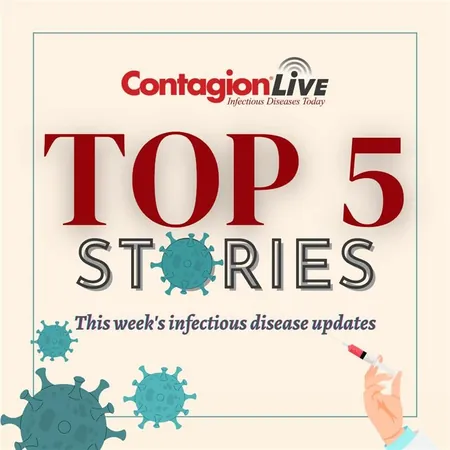
Groundbreaking Label-Free Optical Technology Revolutionizes Biological Sensing
2024-09-17
Groundbreaking Label-Free Optical Technology Revolutionizes Biological Sensing
In a remarkable breakthrough, researchers from the University of Arizona have unveiled a cutting-edge biological sensing method capable of detecting substances at zeptomolar concentrations—an astonishingly tiny measurement that could drastically change the landscape of drug testing and biomedical research.
Unmatched Sensitivity for Drug Discovery and Environmental Monitoring
This breakthrough has significant implications for drug discovery, allowing researchers to identify and develop new medications more effectively. Beyond pharmaceuticals, the potential applications extend to developing portable sensors for environmental toxins, monitoring food safety, and screening for cancer—critical avenues for global public health improvement.
Published on August 28 in Nature Communications, the study highlights the work of Judith Su, an associate professor in biomedical engineering and optical sciences at the University of Arizona. She collaborated with Stephen Liggett from the University of South Florida to pioneer this innovative method, leveraging a device called FLOWER—standing for "Frequency Locked Optical Whispering Evanescent Resonator."
Label-Free Optical Technology: A Game Changer
Current biosensing technologies often rely on labeling target compounds with fluorescent or radioactive tags, which can complicate tests and add costs. The FLOWER device offers a label-free alternative, allowing target substances to be analyzed in their natural forms—crucial for maintaining the accuracy of results, particularly in sensitive drug screening trials.
“The need for labeling can sometimes complicate the testing process or even yield interference,” explained Su, who also serves as a principal investigator at the U of A Little Sensor Lab. The heart of FLOWER is a microtoroid, a unique glass structure that effectively captures and analyzes biochemical agents by guiding light in a manner akin to optical fibers.
How FLOWER Works: Precision in Action
When light of a specific wavelength passes through the microtoroid, it resonates. As disease biomarkers or toxic gases are captured, the resonance wavelength shifts, enabling researchers to measure even the smallest concentrations with unparalleled sensitivity. This precise detection mechanism paves the way for groundbreaking advancements in pharmaceutical research.
In their experiments, the researchers utilized G-protein coupled receptors (GPCRs)—known as the "gatekeepers" of cellular function—targeting the kappa-opioid receptor. These receptors play a key role in pain management and are integral to numerous pharmaceutical drugs. The potential for developing non-addictive pain relief medications with this technology is especially exciting for researchers.
A Quantum Leap in Biosensing Technology
Experts are enthusiastic about the implications of this testing method. Bruce Hay, a professor at Caltech who specializes in cellular biology, emphasized the importance of this advancement, noting, “This represents a huge leap in our ability to probe the fundamental components and processes that make up biological systems.”
Mario Romero-Ortega, head of the Department of Biomedical Engineering at U of A, lauded the FLOWER sensor for offering unprecedented peak sensitivity in label-free biosensing and highlighted its potential to enhance early diagnostic assays—ultimately benefiting human health.
Liggett, the research collaborator, confirmed the potential impact on drug testing. “This method could unveil effective drugs that might have been overlooked due to limitations in traditional testing methods,” he said, adding that the quest in medicinal chemistry is to harness all available tools for optimal drug discovery.
As the technology matures, the implications for advancing both medical and environmental sciences are profound. The development of the FLOWER sensor marks not just a scientific milestone but a giant leap forward in understanding and improving health on a global scale.





 Brasil (PT)
Brasil (PT)
 Canada (EN)
Canada (EN)
 Chile (ES)
Chile (ES)
 España (ES)
España (ES)
 France (FR)
France (FR)
 Hong Kong (EN)
Hong Kong (EN)
 Italia (IT)
Italia (IT)
 日本 (JA)
日本 (JA)
 Magyarország (HU)
Magyarország (HU)
 Norge (NO)
Norge (NO)
 Polska (PL)
Polska (PL)
 Schweiz (DE)
Schweiz (DE)
 Singapore (EN)
Singapore (EN)
 Sverige (SV)
Sverige (SV)
 Suomi (FI)
Suomi (FI)
 Türkiye (TR)
Türkiye (TR)